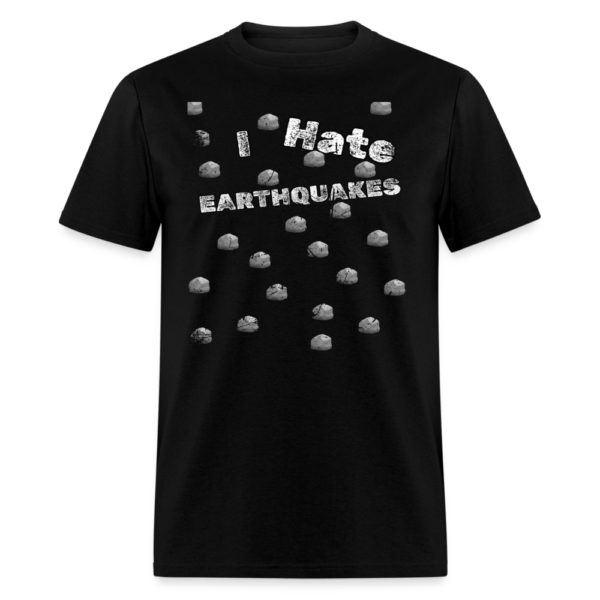Your cart is currently empty!
On February 8, 2025, at 6:23 PM Eastern Standard Time, a significant seismic event rocked the Caribbean Sea. With a magnitude of 7.6 and an epicenter positioned at 17.8° North and 82.5° West, the earthquake struck approximately 21 miles beneath the ocean surface. While seismic events of this magnitude often set off alarms about possible tsunamis, experts have quickly reassured the public that there is no tsunami danger for the U.S. East Coast, the Gulf of Mexico states, or Eastern Canada. However, it is important to note that areas in closer proximity to the earthquake’s epicenter, such as certain Caribbean islands, might face different challenges.
In this comprehensive post, we explore every facet of the event, provide detailed explanations of why some regions are safe, and discuss which areas could be more vulnerable. Whether you are a resident of the affected regions or just curious about earthquake science, this article is here to keep you informed and prepared.
📍 Event Overview and Key Parameters
The recent earthquake in the Caribbean Sea is a reminder of our planet’s dynamic nature. Here’s what we know so far based on rapid preliminary assessments:
- Magnitude: 7.6
- Origin Time:
- 1823 EST (Eastern Standard Time)
- 0723 AST (Atlantic Standard Time)
- 1723 CST (Central Standard Time)
- 2323 UTC (Coordinated Universal Time)
- Coordinates: 17.8° North, 82.5° West
- Depth: Approximately 21 miles
- Location: Deep in the Caribbean Sea
This seismic event has prompted widespread attention, not just because of its sheer force, but also due to the potential for secondary hazards like tsunamis. While earthquakes of this size can indeed generate tsunamis that pose severe risks to nearby coastal communities, the current evaluation confirms that the U.S. East Coast, Gulf of Mexico states, and Eastern Canada are not in danger from tsunami impacts related to this quake.
🔍 Understanding the Science: How Earthquakes Generate Tsunamis
To fully appreciate why certain regions remain safe, it’s essential to understand how tsunamis are created. Tsunamis are typically generated when there is a sudden, large-scale displacement of water. This can happen during powerful undersea earthquakes when the ocean floor shifts abruptly. The energy released in this shift pushes water upward, generating waves that can travel vast distances across the ocean.
Key factors influencing tsunami generation include:
- Earthquake Magnitude and Depth:
While a 7.6 magnitude earthquake is powerful, its depth of 21 miles means the displacement of the ocean floor is less abrupt than in a shallow quake. This reduces the potential for creating massive tsunami waves. - Proximity to Shorelines:
The risk of a tsunami impacting coastal communities increases dramatically when the earthquake occurs near the shore. In this case, the earthquake’s epicenter is located in the open waters of the Caribbean Sea, far from the U.S. East Coast, Gulf of Mexico, and Eastern Canada. - Ocean Floor Topography:
The structure and contours of the ocean floor also play a critical role. The natural features of the Caribbean basin help dissipate the energy released by the earthquake, further reducing the risk of a significant tsunami.
🌐 Regional Impact: What This Means for Different Areas
U.S. East Coast, Gulf of Mexico, and Eastern Canada – Safe and Sound
For residents along the U.S. East Coast, in Gulf states, and Eastern Canada, the latest assessments indicate no tsunami threat. Despite the earthquake’s powerful energy, the following factors contribute to the safety of these regions:
- Distance from Epicenter:
The considerable distance between the earthquake’s source and these regions allows the energy from the quake to dissipate. As tsunami waves travel over long distances, they lose energy and amplitude, making them less dangerous upon reaching distant shores. - Geological and Hydrological Factors:
The unique topography and bathymetry (the underwater equivalent of topography) of these areas help mitigate the impact of any waves that might be generated. The natural barriers and the gradual slope of the ocean floor reduce the likelihood of large, destructive waves forming.
Areas Possibly Under Threat: Focus on the Caribbean Islands
While the U.S. East Coast, Gulf states, and Eastern Canada are not at risk, certain regions near the earthquake’s epicenter might experience more significant effects. Islands and coastal communities in the Caribbean are closer to the source and could face higher risks of localized tsunamis or strong sea currents. Areas that might be under threat include:
- The Bahamas and Cayman Islands:
These areas are relatively close to the epicenter and could experience the brunt of the wave energy, depending on the precise underwater dynamics. - Cuba and Jamaica:
As major islands in the Caribbean, Cuba and Jamaica have coastlines that might be more vulnerable to the immediate effects of the seismic event. - Puerto Rico and Haiti:
Both of these regions have complex coastal geographies that can amplify the effects of tsunamis. Local authorities in these areas are advised to remain vigilant and follow official guidance.
Local emergency services in these potentially vulnerable regions are on high alert. Residents in these areas should pay close attention to updates from local authorities and be prepared to follow any evacuation orders if conditions change.
🚨 What Does This Mean for Emergency Preparedness?
Even if your area is not directly threatened by tsunami waves, it is always wise to be prepared for natural events. Here are some steps you can take:
1. Stay Informed with Reliable Sources
- Follow Local and National Alerts:
Regularly check updates from trusted sources like the U.S. National Tsunami Warning Center, Environment Canada, and local emergency management agencies. Reliable, real-time information is crucial during any emergency. - Download Emergency Apps:
Many regions offer free mobile apps that send out alerts for earthquakes and tsunamis. These apps are invaluable for receiving timely notifications.
2. Develop and Practice Your Emergency Plan
- Know Your Evacuation Routes:
Familiarize yourself with the nearest evacuation routes and safe zones. Whether you live near the coast or further inland, having a plan in place can save lives. - Prepare an Emergency Kit:
Assemble a kit containing essentials such as water, non-perishable food, medications, flashlights, batteries, and a first aid kit. Ensure this kit is easily accessible at all times. - Practice Drills:
Conduct regular emergency drills with your family. Knowing what to do in a crisis helps reduce panic and ensures everyone is on the same page when an emergency strikes.
3. Understand Your Local Risks
- Local Geographical Factors:
Even if you are not in an area at high risk for tsunamis, understand the local geography. Coastal communities can have unique challenges, and being aware of these helps in making informed decisions. - Community Involvement:
Join local preparedness groups or community forums. Sharing information and strategies can improve overall community resilience in times of crisis.
💡 Scientific Insights and Future Implications
The earthquake in the Caribbean Sea underscores the importance of ongoing research and technological advances in seismology and tsunami prediction. Scientists are continuously improving models that predict the behavior of seismic waves and tsunami propagation. Here’s what the future might hold:
- Enhanced Early Warning Systems:
Advances in real-time monitoring and data analytics are making it possible to detect seismic events more quickly. Future systems will likely provide even faster alerts, giving communities more time to prepare. - Improved Disaster Response:
With better predictive models, emergency management agencies can fine-tune their response strategies. This means more effective evacuations and resource allocation when a tsunami or other natural disaster occurs. - Community Education Programs:
Increasing public awareness through community programs and educational workshops is crucial. Understanding the science behind earthquakes and tsunamis empowers individuals to take proactive measures for their safety.
🌟 Bringing It All Together: Why Preparedness Matters
This recent seismic event serves as a powerful reminder of the unpredictable nature of our planet. While the U.S. East Coast, Gulf of Mexico states, and Eastern Canada remain safe from any tsunami threat stemming from this earthquake, nearby Caribbean regions could be at greater risk. It is essential to stay informed, prepare adequately, and understand that even distant events can have local implications.
Remember, natural disasters can happen at any time. By taking proactive steps—staying informed, developing an emergency plan, and participating in community safety initiatives—you can protect yourself and your loved ones. Every moment spent preparing is a step toward ensuring your safety during unforeseen events.
📣 Final Call to Action
We want to hear from you! Do you have any emergency preparedness tips or personal experiences you’d like to share? Please leave your thoughts in the comments below and share this post with friends, family, and community groups. The more we spread awareness, the better prepared we all are for the future.
Your safety is our priority, and together we can build a more resilient community. Stay alert, stay informed, and most importantly, stay safe!
Vintage I Hate Earthquakes Unisex Classic T-Shirt
Express your seismic discontent with the Vintage ‘I Hate Earthquakes’ Unisex Classic T-Shirt! Perfect for anyone who’s had enough of the ground shaking—wear it proudly and let the world know you’re just trying to stay steady!
-

Hungry and Humble Football Player Flapping Arms Touchdown Celebration Unisex Classic T-Shirt #philly
$19.99 Select options This product has multiple variants. The options may be chosen on the product page -

Africatown in Philly Phrase Unisex Classic T-Shirt
$13.99 Select options This product has multiple variants. The options may be chosen on the product page -

Vintage Funny Cat Selfie UFO Alien Invasion Unisex Classic T-Shirt
$13.99 Select options This product has multiple variants. The options may be chosen on the product page -

Vintage Philly Underdogs German Shepherds Unisex Classic T-Shirt
$9.99 Select options This product has multiple variants. The options may be chosen on the product page
————————————————
We use AI GPT Chatbots to help with our content and may get some things wrong.
————————————————-



